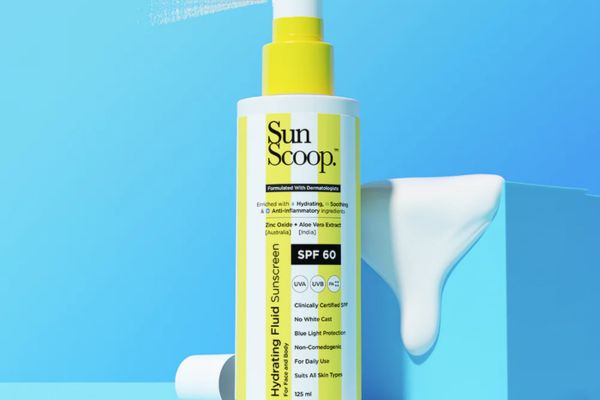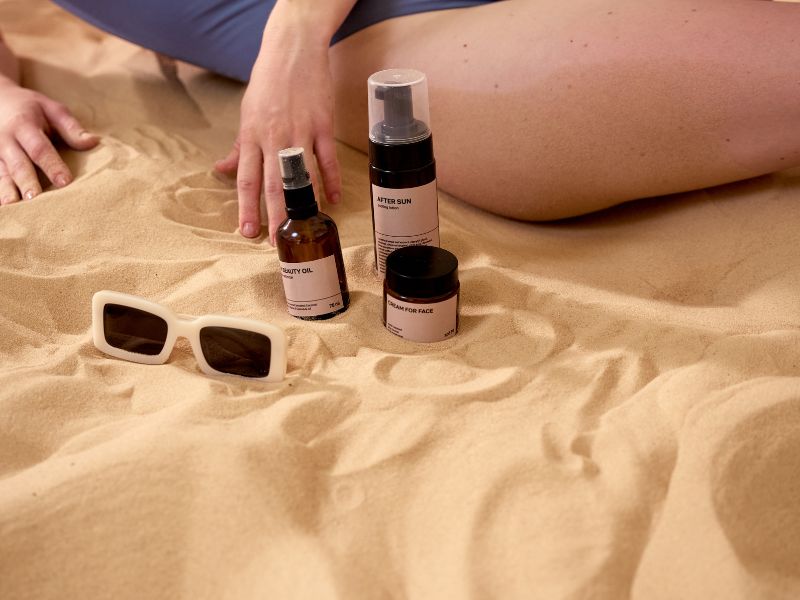Sun protection is a crucial part of any skincare routine, and sunscreen plays a starring role in shielding the skin from harmful UV rays. With so many options on the market, it’s common to wonder if the sunscreen you use on your body is suitable for your face and vice versa.
Is Face Sunscreen Different From Body Sunscreen
Although both face and body sunscreens share the primary goal of protecting the skin from the sun, there are distinct differences in their formulations and applications. In this article, we’ll look into the nuances of face and body sunscreens, covering their unique properties, benefits, and how to choose the right product for your specific needs.
What is Face Sunscreen?
Face sunscreen is specially formulated to be gentle on the sensitive skin of the face. Facial skin tends to be thinner and more delicate than the skin on other parts of the body, and it’s more susceptible to issues like acne, irritation, and premature aging. Because of these sensitivities, face sunscreen often includes a mix of ingredients that provide effective sun protection without clogging pores or causing breakouts.
Most face sunscreens are designed to be lightweight and absorb quickly into the skin. They often include ingredients tailored to address facial skincare concerns, such as anti-aging agents, moisturizers, and antioxidants, which offer additional benefits beyond UV protection.
What is Body Sunscreen?
Body sunscreen, in contrast, is typically formulated for the thicker and less sensitive skin on areas like the arms, legs, and torso. Since these areas don’t have the same sensitivity concerns as the face, body sunscreens can afford to have thicker, creamier textures and less expensive ingredients without sacrificing effectiveness.
Body sunscreens are designed to cover larger areas and may require reapplication more frequently than facial sunscreens if exposed to sweat or water. They’re also often available in larger quantities and are usually more affordable per ounce, considering the larger surface area they need to cover.
The Differences in Ingredients Between Face and Body Sunscreens
The ingredients used in face and body sunscreens are often tailored to the unique needs of each skin area. Some differences include:
- Non-comedogenic ingredients: Facial skin is prone to breakouts, so face sunscreens are often non-comedogenic, meaning they won’t clog pores. This is less of a concern with body sunscreens.
- Moisturizing and nourishing agents: Face sunscreens may include hyaluronic acid, glycerin, and other hydrating ingredients to prevent dryness, especially for those with sensitive skin.
- Anti-aging and antioxidant ingredients: Ingredients like niacinamide, vitamin C, and peptides are more common in face sunscreens to offer additional skincare benefits.
These ingredient variations help ensure that each sunscreen type effectively protects and nourishes the skin without causing unnecessary irritation.
How Face Sunscreen Feels Different
Face sunscreen is often designed to be lightweight and comfortable for all-day wear. Since facial skin is sensitive and prone to irritation, a thick, greasy sunscreen can lead to clogged pores and a sticky feeling, especially under makeup. Face sunscreens typically offer a lighter consistency that absorbs quickly and sits well on the skin.
Body sunscreens, however, are often thicker and creamier, designed to be slathered on larger surface areas without the need for frequent reapplication. This thicker consistency ensures effective coverage over body skin, which is less sensitive but may require more resilience to stay effective during outdoor activities.
SPF Levels and UV Protection
Both face and body sunscreens are available in a range of SPF (Sun Protection Factor) levels, which determine the level of UVB protection. However, face sunscreens often feature a higher SPF rating as facial skin is more prone to damage from daily sun exposure, which can contribute to premature aging and hyperpigmentation.
Choosing an SPF level of at least 30 is recommended for both face and body sunscreens. However, those with sensitive or acne-prone skin on the face may opt for a sunscreen with SPF 50 or higher to ensure maximum protection against sun-induced damage and aging.
Are Chemical and Physical Sunscreens Used Differently for Face and Body?
Both chemical and physical sunscreens are suitable for face and body use, but they have different pros and cons depending on the application area.
- Chemical sunscreens contain ingredients that absorb UV radiation and transform it into heat. These sunscreens tend to be more lightweight and blend easily, making them ideal for the face.
- Physical (or mineral) sunscreens use ingredients like zinc oxide and titanium dioxide, which physically block and reflect UV rays. These sunscreens tend to be thicker, which makes them better suited for body application. However, many people with sensitive skin or those who prefer a natural product use mineral sunscreens for the face as well.
For sensitive skin, physical sunscreens are usually the safer choice as they’re less likely to irritate.
Can You Use Body Sunscreen on Your Face?
While you technically can use body sunscreen on your face, it’s generally not recommended for those with sensitive, acne-prone, or combination skin. Body sunscreens are often heavier and may clog pores on the face, leading to breakouts or a greasy feeling.
However, if you’re in a pinch and only have body sunscreen available, it’s better to use it than skip sunscreen altogether. Opt for a small amount and check for any discomfort or irritation, especially if the body sunscreen has a strong fragrance, which can be irritating on facial skin.
How to Choose the Right Face and Body Sunscreens
Choosing the right sunscreen involves considering your skin type, lifestyle, and specific needs. Here are some pointers for both face and body sunscreens:
- For the face: Look for non-comedogenic, lightweight, and moisturizing formulas, especially if you wear makeup. Choose higher SPF for more frequent sun exposure.
- For the body: Choose water-resistant options for activities involving water or sweating. Body sunscreen can have a thicker consistency without worry, so feel free to select more affordable options if coverage is the priority.
Consider any additional needs, like anti-aging or sensitive skin formulations, to ensure your sunscreen aligns with your skincare routine.
Why Skincare Experts Recommend Separate Sunscreens for Face and Body
Skincare professionals generally advise using separate sunscreens for the face and body because of the distinct needs of facial skin. Face sunscreens provide protection tailored to sensitive skin that is frequently exposed to the sun, while body sunscreens focus on coverage, durability, and cost-effectiveness.
Experts also recommend reapplying sunscreen every two hours when outdoors. Using a specialized face sunscreen helps maintain skin health without the potential for breakouts or clogged pores, especially for those who layer sunscreen under makeup.
Conclusion
In summary, while both face and body sunscreens share the primary purpose of protecting against UV rays, they differ significantly in formulation, texture, and application. Face sunscreen is designed to cater to the sensitive skin of the face, often including added skincare benefits and lightweight, non-comedogenic ingredients. Body sunscreen, on the other hand, can afford to be thicker and more cost-effective, focusing on broad, resilient coverage over large areas.
For optimal skin health, it’s best to use a dedicated face sunscreen tailored to your skin type and lifestyle while keeping a body sunscreen on hand for full-body protection. By choosing the right products for each area, you can enjoy the benefits of comprehensive sun protection that supports the unique needs of both face and body skin.






